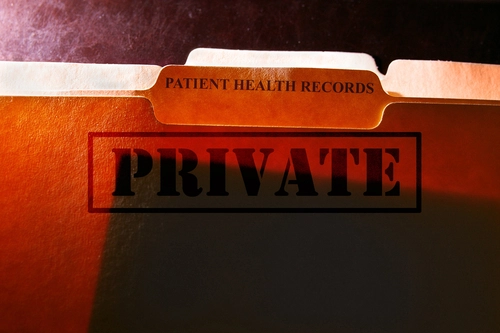Ob-Gyn Coding Alert
Tackle Incomplete Notes and Learn How to Query Providers With Ease
Hint: Know when to query.
Having complete and accurate documentation is so important in your practice. Not only does the documentation need to support medical necessity for the procedures performed, but the medical records also guide your physician as they determine future care for patients. If a note is incomplete, you may need to query your physician.
Here are some tips on how to review a patient record and how to submit respectful and productive provider inquiries.

Review CMS Guidelines for Proper Documentation
The Centers for Medicare & Medicaid Services (CMS) stresses that for a claim to be valid, there must be sufficient documentation to verify services performed were “reasonable and necessary,” and “supports the level of service” billed. In other words, if documentation is missing or insufficient, then there is no proof the reported codes accurately represent the encounter. Furthermore, if the documentation does not support paid claims, reimbursement may be considered an overpayment, and CMS could end up recouping the funds.
CMS dictates medical record notes should meet the following criteria:
1. Notes are complete and legible.
2. Notes include:
- Reason for the encounter, relevant history, findings, diagnostic test results and date of service;
- Assessment, clinical impression, or diagnosis;
- Plan of care; and
- Date and legible identity of the observer.
3. If not documented, the rationale for ordering diagnostic and other ancillary services should be easily inferred.
4. Past and present diagnoses are accessible to the treating and/ or consulting physician.
5. Appropriate health risk factors are identified.
6. The patient’s progress, response to and changes in treatment, and revision of diagnosis are documented.
7. The treatment and diagnosis codes (as well as the level of care) reported are supported by the documentation.
Lean on E/M Notes
While CPT® makes it clear that its evaluation and management (E/M) guidelines don’t establish documentation requirements or standards of care, it does remind coders of the main purpose of documentation. Proper documentation is meant to “support the care of the patient by current and future health care team(s),” according to the E/M Guidelines.
H&P is still important: It’s a common misconception that since history and physical exam haven’t directly contributed to office/outpatient E/M code selection since 2020, there is no reason to spend time documenting the history and examination. But exams and history are very much still part of the E/M services, and therefore, must be documented. The E/M code descriptors tell you the service must include a “medically appropriate history and/or physical examination, when performed,” according to the guidelines. Remember, the purpose of a complete medical record is to provide thorough information for current and future healthcare teams.
Analyze the Medical Record with These Questions
The quality of the provider’s documentation allows coders not only to code with accuracy, but also to the highest specificity.
It’s important the provider get credit for all the work done. “When I’m analyzing a record, I like to use the acronym M.E.A.T., which stands for Monitor/Manage, Evaluate, Assess/ Address, and Treat,” explains Keisha Wilson, CCS, CPC, SPMA, CRC, CPB, AAPC Approved Instructor at KW Advanced Consulting, LLC in New York City. The acronym allows you to look at the patient record and see if all those elements have been addressed in the documentation by asking questions such as the following:
- Are there symptoms that show the progression or regression of a disease? (Monitor/Manage)
- What are the providers doing to evaluate this condition, and what are the tests ordered? (Evaluate)
- What tests has the patient had in the past/today? What were the findings? (Evaluate)
- How are the providers assessing and addressing the condition today? (Assess/Address)
- What is the plan for treatment? (Treat)
“If a provider keeps the term M.E.A.T. in mind, they will often have all the needed information for the coder to code the encounter without many queries,” Wilson says.
Recognize When to Query the Provider
Whenever there is inconsistent, missing, unclear or illegible documentation, query the provider immediately. To avoid unnecessary queries or incomplete queries that create more questions, read over the record carefully and look for gaps in the documentation relating to the following:
- Reason/intent of the visit
- Reason/intent for tests and/or procedures
- Status of established complaints
- Is the condition active or resolved? If active, is the condition stable, worsening, or not at goal? The answer could affect the assigned level of service based on the E/M complexity guidelines.
- Acuity of a diagnosis
- What are the medical needs to support? Is the condition acute, sub-acute, or chronic?
Coding alert: When cross-referencing diagnosis codes, remember to look out for “Use Additional” notes. If additional information is required to report a code, that may be something you’ll need to include in your query.

Understand How to Query a Provider
There are fundamentally three types of queries. Which one or combination you use will be dependent on the situation and include the following options:
1. Y/N query: The query is written so the only answer can be “yes” or “no.”
2. Multiple-choice query: This question includes clinically significant and reasonable options as supported by clinical indicators in the record — understand though, at times, there may be only one reasonable option.
3. Open-ended query: This query allows a written response. Use when there are clinical indicators in the notes for a diagnosis or service, but the indicated diagnosis or service is not noted.
No matter which type of query you use, you should always use a consistent, compliant format. Additionally, state the facts simply and avoid making questions overly wordy. “Keep queries short and sweet and almost emotionless in tone. Don’t lead your providers to an answer either, as that won’t stand up in an audit,” Kelly Shew, RHIA, CPC, CPCO, CDEO, CPB, CPMA, CPPM, CRC, risk adjustment education specialist at Olympia Medical in Livonia, Michigan. Also, remember to document your queries and the provider’s response in the patient’s record in case anyone needs to reference the file later.
EMRs: Your practice may have query templates built into the electronic medical record (EMR) that can help you manage and maintain queries. If it looks like these templates have not been activated, reach out to the vendor. If an electronic query management system is not available, you can always create a standard text document to use and store queries.
Related Articles
Ob-Gyn Coding Alert
- Obstetrics:
How to Choose the Correct Comparison Code for the Jada Device
Here’s how Jada device and the Bakri balloon differ. When it comes to reporting the [...] - Preventive Services:
Do You Know How to Use Medicare’s “Carve Out” Rule? Find Out.
Do you know which modifier tells Medicare that you know the service isn’t covered? Suppose [...] - Documentation:
Tackle Incomplete Notes and Learn How to Query Providers With Ease
Hint: Know when to query. Having complete and accurate documentation is so important in your [...] - You Be the Coder:
Failed Medical Abortion Scenario
Question: I have a patient who had a failed medical abortion (other provider) and so she [...] - Reader Questions:
Delve Into Prescription Drug Management Advice
Question: What qualifies as prescription drug management, which is a moderate-risk level in the complications and/or [...] - Reader Questions:
Code This GBS Screening Scenario
Question: I’m looking for some guidance on coding of GBS bacteriuria in a pregnant patient. Here’s [...] - Reader Questions:
Distinguish Between Your PCPs, Ob-Gyns
Question: My office has primary care physicians (PCPs) and ob-gyn doctors. We have a patient that [...]




